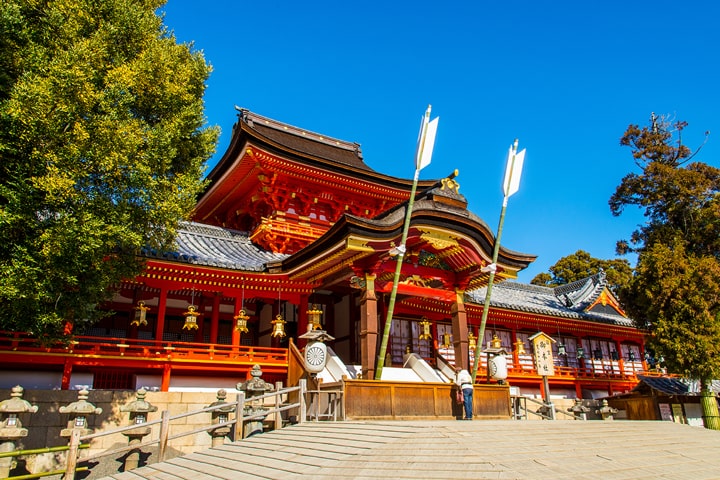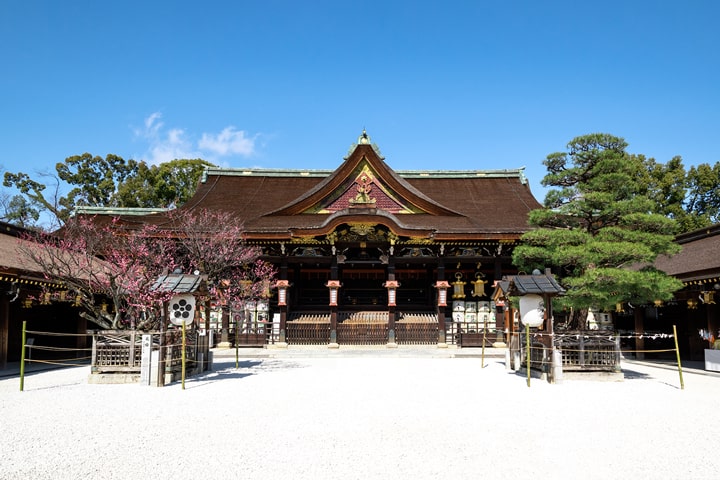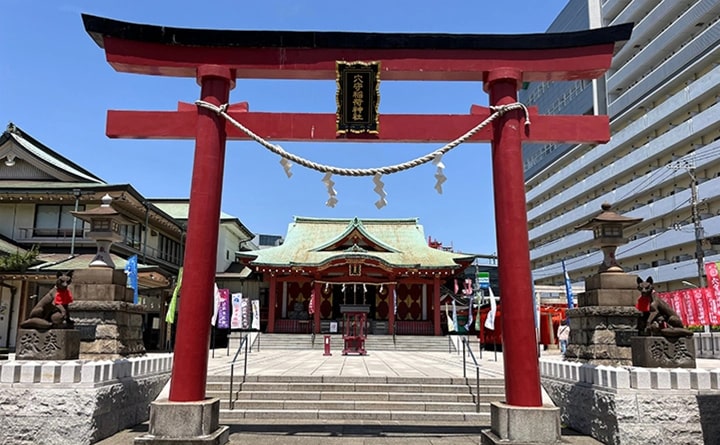Representative Kami
Shinto is often said to honour eight million kami, and while this is simply a poetic way to say “too many to count”, it captures an important truth about Shinto. There are many kami, some venerated across Japan, others rare outside a particular region, and still others honoured at only a single jinja. Even so, there is no clear hierarchy among them, and all kami are worthy of respect. It is clearly impossible to introduce all of the kami here, but the four described on this page are of particular importance, and jinja enshrining them can be found in every corner of Japan.
Table of contents
Amaterasu-Omikami
Amaterasu-Omikami is the ancestral kami of the Tenno and the Imperial family. She plays a central role in some of the most famous of Japanese myths and is enshrined at Ise Jingu. Many other jinja also enshrine her, and she is regarded as the patron kami for the whole of Japan.

Hachiman Okami
Hachiman Okami is enshrined at over 8,000 jinja across Japan, and more primary jinja enshrine this kami than any other. Hachiman Okami is three kami. The central kami is Ojin Tenno, the 15th Tenno, and the second kami is his mother, Jingu Kogo. The third kami varies from one jinja to another: it may be Ojin Tenno’s consort, or his father, or sometimes his son.
In the eighth century the kami was enshrined in the ancient capital at Nara, in response to an oracle, in order to assist with the creation of the Great Buddha of Todaiji. After this time, Hachiman Okami was closely associated with Buddhism, and Ojin Tenno was often depicted as a Buddhist monk. A few centuries later, Hachiman Okami was the patron kami of the Minamoto warrior clan, which established the first Shogunate, and thus became associated with warriors. The legends of Jingu Kogo mean that the kami is also associated with safe pregnancy and childbirth, and with success in difficult endeavours of any sort.

Tenjin
Tenjin is a historical figure, Sugawara no Michizane, a scholar and statesman of the ninth and very early tenth centuries. He was exiled from the capital at Kyoto to Kyushu as a result of the machinations of his political enemies, and he died in exile, still protesting his innocence. After his death, several of his enemies died of plague, and lightning struck the Imperial palace. This was attributed to his curse, and he was restored to his former rank, posthumously promoted, and venerated as a kami. The “jin” in his name means “kami”, and so he is not normally referred to as “Okami”.
At first, he was primarily venerated in connection with the weather, but over time Sugawara no Michizane’s reputation as a scholar influenced the practices of this tradition, and today he is primarily associated with scholarship. School children and university students all over Japan visit his jinja to pray for success in examinations

Inari Okami
Inari Okami is an extremely popular kami, particularly in eastern Japan. Not only are there many primary jinja enshrining this kami, but Inari jinja are very commonly found in the precincts of other jinja, or in the grounds of private houses. Inari is closely associated with rice, the harvest, and prosperity, but is identified with several different kami, and sometimes with a Buddhist figure (a handful of places that venerate Inari Okami are Buddhist temples, rather than Shinto jinja). Most, but not all, of these figures are female, but historically Inari Okami was portrayed as male at least as often as female. The kami’s association with rice and prosperity expanded over time to include business success in general, and many businesses venerate Inari Okami somewhere on the premises.
Inari Okami is also famous for an association with foxes. These foxes are almost always regarded as the messengers of the kami, rather than being the kami, and statues of foxes normally stand in front of Inari jinja. Those jinja are also marked by red torii, and it is not uncommon for there to be many torii along the sacred path to the sanctuary.
